As someone who has done their fair share of camping in the great outdoors, I have realized that having a tarp under your tent is smart. The tarp is nothing more than a sheet or cover that you put under your tent before you set it up. But it can provide many advantages to make your trip much more enjoyable.
While having a tarp under your tent has advantages, there are also some disadvantages. In today’s guide, I will tell you all about these advantages and disadvantages while also helping you choose the best type of tarp for your tent. By the time you reach the end of this guide, you will know whether investing in a tarp is the right move for you or not.
So, let’s get into the guide and see what the tarp is all about and whether you need one or not!
More...
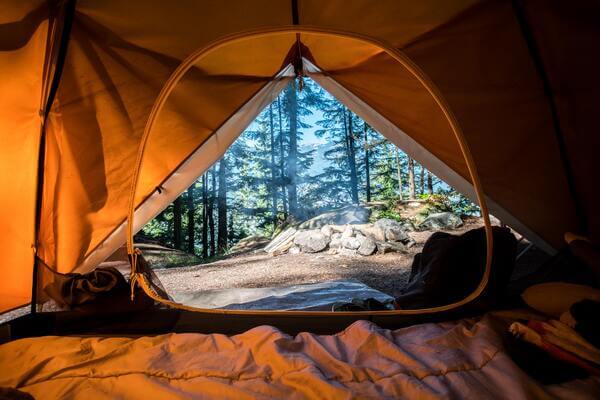
Table of Contents
Do You Need a Tarp Underneath a Tent?
Whether you need a tarp underneath your tent will depend on a few things. The first thing you will need to consider is your particular tent type. Most quality tents come at high prices because they are made from durable, waterproof materials that protect you from the cold ground.
Sleeping in a low-quality tent and directly on the ground can be a nightmare. You will likely experience back pain or even be unable to fall asleep, especially if there are rocks or pointy grass below you. The only thing that could make the experience better for you at this point is adding a tarp!
The tarp is a security blanket between the ground and you (If you use the tarp correctly). If you have a tarp that is a bit thicker and made from a rigid material, it will make up for the uneven ground and grass. You will not feel anything as soon as you add it below your tent.
Another thing you should know is that the tarp can come in handy when you need to sleep on wet ground or when you fear that there might be condensation in the tent. There are many reasons why the tarp can improve your camping trip, and these are only some. If you want to learn more about why you should put a tarp under your tent, make sure to read the next section!
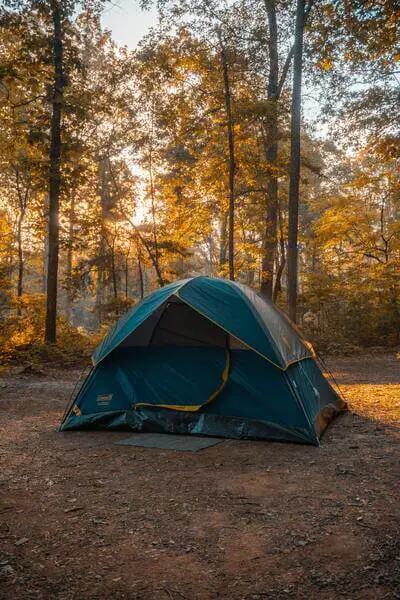
Reasons Why You Need To Put a Tarp under Your Tent
There are many times when a tarp under your tent can be a lifesaver. If you want to learn why you need to have a tarp under your tent, make sure you read the following list:
Reason 1 – Better insulation
Laying on the cold, hard ground can make you feel even colder when winter camping. Some quality tents have excellent insulation on their own, but most tents can use the added insulation. You must get a tarp if your tent falls into the second category.
If camping in cold weather, you can use a regular waterproof tarp. When winter camping, consider getting one of the tarps with better insulation properties so you can stay warm at all times.
Also, if you suspect the weather can turn worse during your trip, it will be wise to take the tarp to use in case you need it.
Reason 2 – Better protection
The tarp also serves as a protective layer between any sharp rocks or uneven ground and yourself. By placing the tarp below your tent, you ensure that the ground and the grass on the ground will not cause any problems.
To add, having a tarp below your tent will make it more difficult for bugs to crawl in it, as they will not be able to pass the tarp. Since the tarp will be larger than the actual tent, it will give you enough space to clean your shoes before entering the tent. That way, your tent will stay clean and protected simultaneously!
Reason 3 – Dryness
When camping in rainy weather, finding a spot to place your tent will be more difficult. Putting it on wet ground will mean that all that water could make its way to the tent. To add, having direct water in the tent would cause condensation.
You should place the waterproof tarp underneath your tent to avoid such things. That way, the water will not make its way into the tent so that no condensation will form. Also, you will have a dry place to sleep at night, which is always good!
Reason 4 – Prolonged lifespan
A tarp under the tent will prolong the tent’s lifespan since there will be no wear and tear due to the added protection. You can use your tent for much longer without worrying about its quality deteriorating.
Of course, taking proper care of the tent and tarp is also necessary if you want to keep them in top shape. This means you must clean the tent and tarp after each trip while also doing a detailed inspection to ensure their lifespan will be longer than expected.
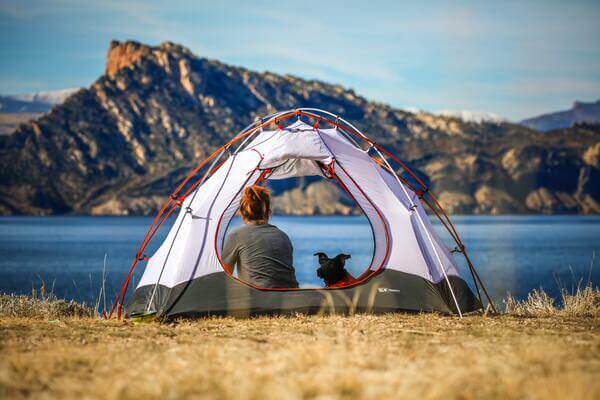
Reasons Why You do not Need To Put a Tarp Under Your Tent
While using a tarp under your tent comes with many significant advantages, it also comes with some disadvantages that you have to consider. Let’s look into them so that you can better understand when you do not need to have the tarp under your tent:
Reason 1 – Added weight
When you are backpacking, you can only take so many things. Carrying a heavy load to a remote mountain place can make things much more difficult for you. So, you will need to leave all unnecessary stuff behind.
Consider leaving the tarp behind when camping where it will not be necessary. That way, it will not add any weight to you. Also, you will be able to use the extra space for something else that is more necessary for that trip. So, use your space well and consider the weight you are comfortable carrying.
Reason 2 – No need for insulation
When tent camping in nice weather, there is no need for extra insulation as you do not want to feel hot inside the entire tent. So, you might not need to add the tarp for insulation. Still, you can use it as a base for your tent.
Reason 3 – No need for moisture protection
If you are not camping in rainy weather, you might not need the tarp to prevent moisture. No water will make its way into the tent, so the tarp will not be necessary.
Again, you can consider using it only as a base for the tent and other types of protection. I mentioned above that uneven terrain and grass can cause issues if you do not have a tarp. So, consider using it for security instead of moisture control.
Reason 4 – Noise reduction
Finally, you must know that the tarp can reduce footstep noises around you. Some consider this an advantage, especially when camping with other people around you. But you will not need noise reduction when camping alone or in a remote area.
Wild animals will likely approach your tent when camping alone in the mountains. Hearing their footsteps can help you protect yourself even before you confront them. So, you should keep this in mind when deciding if you want to use the tarp or not.
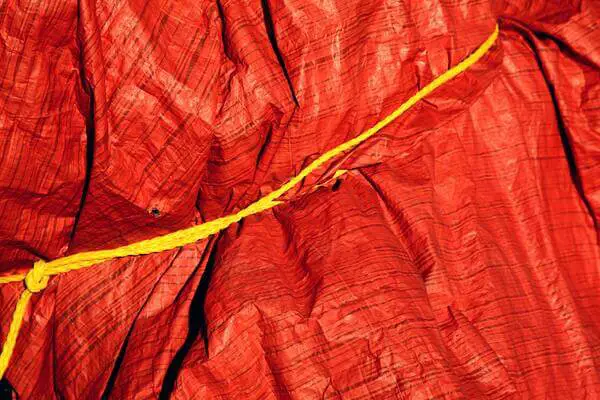
How Thick Should a Tarp Be Under a Tent?
When it comes to tarps, having a thick one is not always the best option, especially if you are backpacking. Thick tarps are bulky and heavy, making them difficult to carry around on foot. The same problem will not arise when car camping but when backpacking.
So, you should put the thickness aside and consider other features you want to get from your tarp. For example, you will need it to be waterproof but breathable. You will also need it made from a heavy-duty material so it will not damage. Finally, you will need it to be lightweight and thin to bring it on backpacking trips.
You will not need the added thickness if you get a quality tarp with great breathability, waterproofing, and durability. Even a thin but high-quality tarp will do a good job.
What Type of Tarp to Put Under Tent?
If you are on the market for a new tarp that you will use under your tent, there are a few things to consider. You must consider the tarp’s size, weight, material, and use. Let’s start with the size.
Size
When buying a tarp, you must ensure that it fits under your tent and is even slightly larger than the tent’s base. So, measure the tent size and cross-check it with the size of the tarp you want. Get that tarp only if it is a bit larger than the tent’s base – preferably only a few inches larger on all sides.
Weight
As for the weight, I mentioned that backpacking trips go hand in hand with lightweight camping gear. If you tend to backpack often, consider getting a tarp that does not weigh much. If you go car camping more often, you do not need to worry about the weight as the car will carry the heavier tarp for you without any problem.
Material
There are tarps of all shapes and sizes, all colors and materials. I prefer the tarps made from canvas as they are the most durable. But they can come at a high price, so you should consider that when deciding. There are other budget options, like nylon, but they are not that durable.
As for the color, always go with something dark. That way, the tarp will not look bad even if it is not clean. You can wash the tarp and store it as soon as you get home, keeping it ready for the next trip.
Use
Finally, I want to mention that investing in a classic multi-purpose tarp is smart. You can use such a tarp under tents, sunshades, or even an improvised shelter. Instead of getting separate tarps for each need, get one you can use for everything! That way, you can save on space and money.
Wrap-Up
If you love camping, investing in the right tarp you can use whenever needed is a great idea. Based on the advantages and disadvantages I mentioned above, I hope you can decide when you need the tarp, when you can leave it behind, and whether you need a tarp for your next camping trip.
If you know some excellent tarps you want to recommend to your fellow campers, please share them in the comments below. Also, let me know more about your experience with tarps and whether you find them useful. I cannot wait to read all your stories!
- Are Merrell Shoes Good? – An Unbiased Review of Merrell Footwear - December 9, 2023
- Where Are Merrell Shoes Made? - December 9, 2023
- Camping in 40-degree Weather: Tips and Tricks - September 25, 2023

![What to Put Under Air Mattress When Camping? [Detailed Guide] What to Put Under Air Mattress When Camping? [Detailed Guide]](https://grandcircletrails.com/wp-content/uploads/2022/06/What-to-Put-Under-Air-Mattress-When-Camping-150x150.jpg)
![Why Your Campfire Smokes So Much? [Quick Answers You Should Know] Why Your Campfire Smokes So Much? [Quick Answers You Should Know]](https://grandcircletrails.com/wp-content/uploads/2021/09/Why-Your-Campfire-Smokes-So-Much-1-150x150.jpg)
![Is Hiking Bad for Your Knees? [Best Ways To Protect Your Knees] Is Hiking Bad for Your Knees? [Best Ways To Protect Your Knees]](https://grandcircletrails.com/wp-content/uploads/2022/12/is-hiking-bad-for-your-knees-150x150.jpg)
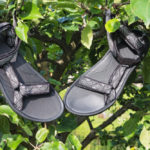
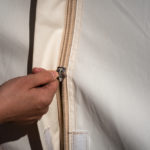
![How to Put Out a Fire without Water? [Guide] How to Put Out a Fire without Water? [Guide]](https://grandcircletrails.com/wp-content/uploads/2022/03/How-to-Put-Out-a-Fire-without-Water-2-150x150.jpg)